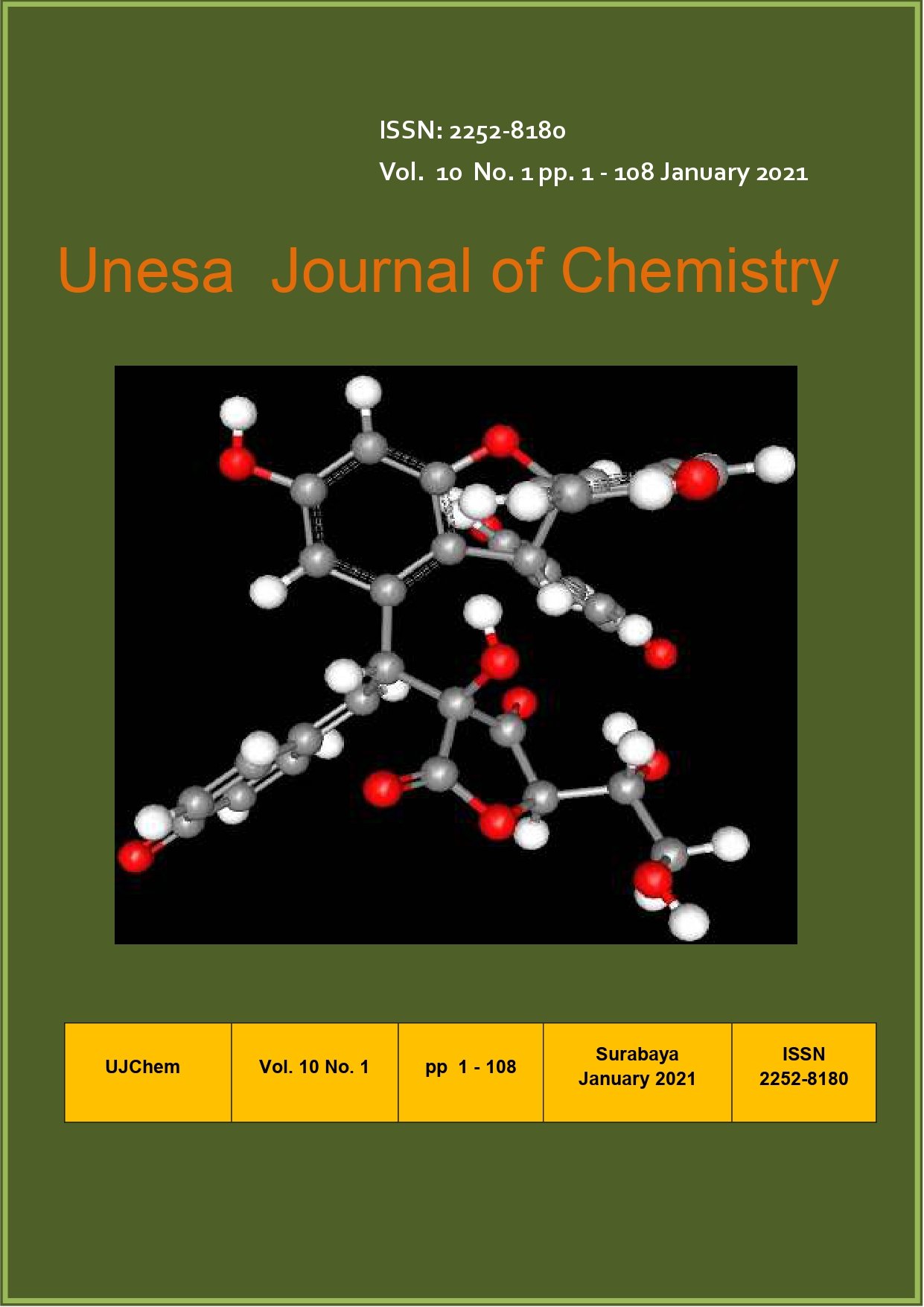EFEKTIVITAS ANTIBAKTERI DAN KADAR FENOLIK TOTAL EKSTRAK DAUN YAKON (Smallanthus sonchifolius) DENGAN VARIASI DAERAH BUDIDAYA TANAM DAN LAMA WAKTU EKSTRAKSI EFFECTIVENESS OF ANTIBACTERIAL AND TOTAL PHENOLIC CONTENT FROM YACON LEAF EXTRACT (Smallanthus sonchifolius) WITH VARIATION OF CULTIVATION AREA AND TIME OF EXTRACTION
Main Article Content
Abstract
Abstrak. Yakon merupakan tanaman asli dari dataran tinggi Andes di Amerika Selatan yang selama
berabad-abad telah digunakan untuk makanan maupun obat tradisional. Penelitian ini bertujuan untuk
mengetahui efektivitas antibakteri dan kadar fenolik total ekstrak daun yakon dengan variasi daerah
budidaya tanam dan lama waktu ekstraksi. Daun yakon diperoleh dari daerah Magetan (900 mdpl) dan
Wonosobo (1200 mdpl). Metode ekstraksi yang digunakan adalah metode dekoksi selama 0, 5, 10, 15 dan
20 menit. Penentuan kadar fenolik total menggunakan metode Folin-Ciocalteu dengan spektrofotometer UVVis pada ?785 nm. Uji efektivitas antibakteri menggunakan metode difusi cakram dengan konsentrasi 200,
400, 600, 800, dan 1000 ppm. Hasil penelitian menunjukkan kadar fenolik total tertinggi terdapat pada
sampel Magetan dan pada waktu ekstraksi 0 menit yaitu sebesar 158.45 mg CAE/g ekstrak. Aktivitas
antibakteri tertinggi ditunjukkan oleh sampel Magetan dengan konsentrasi 1000 ppm yaitu sebesar 7.3 mm
dan tergolong antibakteri yang sedang. Data dianalisis melalui Anova one way dan Kruskal-wallis. Data
statistik sampel Magetan yang diperoleh dengan uji post-hoc LSD menunjukkan bahwa kadar fenolik total
yang dihasilkan pada menit ke-0 hingga menit ke-20 waktu ekstraksi mengalami penurunan secara
signifikan. Untuk data statistik sampel Wonosobo yang diperoleh dengan uji post-hoc Mann-Whitney
menunjukkan bahwa kadar fenolik total yang dihasilkan pada menit ke-0 hingga menit ke-5 ekstraksi
mengalami penurunan secara signifikan namun tidak berbeda nyata sampai menit ke-20 waktu ekstraksi.
Berdasarkan hasil penelitian dapat disimpulkan bahwa tempat tumbuh daun yakon paling optimum adalah
di Magetan dengan kadar fenolik total paling efektif sebesar 158.45 mg CAE/g ekstrak dan menunjukkan
aktivitas antibakteri tertinggi konsentrasi 1000 ppm yaitu sebesar 7.3 mm.
Kata Kunci: Daun yakon, ketinggian tempat tumbuh, lama ekstraksi.
Abstract. Yacon is native plant of the Andes in South America for centuries have been used for food and
traditional medicines. Research is aimed to determine the effectiveness of antibacterial and total phenolic
content from yacon extract leaves with the variation of cultivation area and length of time the extraction.
Yacon leaves obtained from Magetan (900 masl) and Wonosobo (1200 masl). Decoction used for method
of extraction with 0, 5, 10, 15 and 20 minutes. Determination of total phenolic levels using the FolinCiocalteu method with UV-Vis spectrophotometer at ?785 nm. Diffusion of discs used for antibacterial
test by concentration 200, 400, 600, 800, and 1000 ppm. The results showed the highest total phenolic
content in the Magetan sample and at the time of extraction of 0 minutes that is equal to 158.45 mg CAE/g
extract. The highest antibacterial activity in the Magetan sample with a concentration of 1000 ppm is 7.3
mm and was classified as medium. One way Anova and Kruskal-wallis were used for statistical tests. The
statistical data of the Magetan sample obtained by the LSD post-hoc test showed that the total phenolic
content produced in the 0 to 20 minute extraction time decreased significantly. Mann-Whitney post-hoc test
on Wonosobo samples showed that the total phenolic levels produced in the 0 to 5 minutes of fermentation
decreased significantly but not significantly different until 20 minute extraction time. Based on the results
of the study it can be concluded that the most optimum place to grow yakon leaves is in Magetan with the
most effective total phenolic content of 158.45 mg CAE / g extract and shows the highest antibacterial
activity concentration of 1000 ppm that is equal to 7.3 mm.
Key words: Yacon leaves, cultivation area, time of extraction

